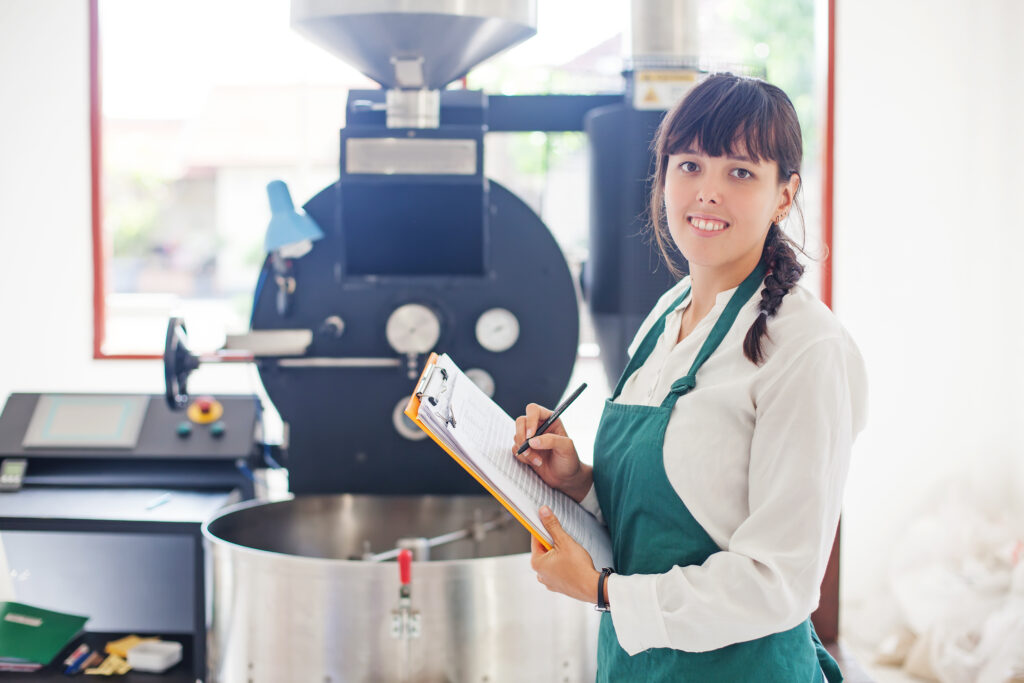What Is HACCP and Its 7 Principles?
The food production industry implements tight regulations to ensure manufacturing safety. Safety is critical within this industry as illnesses caused by cross-contamination could be rife if not for standards like HACCP. HACCP is a practice approved and implemented by government agencies and trade organisations to prevent avoidable illnesses.
But how does HACCP affect your business within the food production industry? Continue reading for a complete overview of the regulations and the seven principles that the system includes.

What does HACCP stand for?
HACCP stands for Hazard Analysis and Critical Control Point. It is a seven-principle system that manages the health and safety of a mass food production environment. Although the HACCP regulations are not mandatory, it is highly recommended and gives business owners the peace of mind that their production practices meet the standards of the UK Food Safety Act (1990).
What are the 7 principles of HACCP regulations?
1. Conduct a Hazard Analysis
A hazard analysis test assesses what could go wrong within the kitchen, including hazards with food handling and biological hazards due to sub-par storage facilities. It also evaluates the likelihood and severity of each issue and plans to address them accordingly.
HACCP kitchen compliance tests are essential to staying current with HACCP, as it identifies every hazard within the environment and provides the knowledge necessary to avoid cross-contamination.
2. Identify the Critical Control Points
A critical control point, or a CCP, is a test that ensures compliance with food safety regulations. Companies should identify critical control points when implementing the HACCP system to ensure the necessary controls are in place for managing food safety. Some examples of CCPs are food storage, cleaning and maintenance procedures, and the delivery and receipt of food into the kitchen.
By identifying CCPs within your kitchen, you determine what you need to control to keep food production safe and hygienic.
3. Establish Critical Limits
The next part of the HACCP process is establishing the critical limits for each of the CCPs you have determined from the guidance above. A critical limit is a maximum or minimum value or level at which the measurement of a parameter occurs to ensure safety.
These include:
- Temperature
- Time Chemical critical limits
- Dried weight
- pH level
- Salt content Physical critical limits
- Absence of allergens
4. Institute monitoring procedures
Now you have established what you will be controlling, you need to decide how you will do it. It is vital to determine the accurate methods of measuring if the CCP is met. Monitoring procedures can ensure this.
For example, if your CCP is raw chicken storage, your critical limit would be the minimum and maximum temperature of the refrigerator. For raw chicken, your refrigerator should be no more than 4℃ for safe storage. The monitoring procedure for this critical limit would be to ensure that regular temperature checks occur. We recommend that the refrigeration temperature is confirmed at least once a day.
5. Establish corrective actions
Furthermore, the next step is establishing corrective actions. These methods will be used if and when a CCP exceeds its critical limit.
These corrective actions ensure that no harmful products find their way out of production and pose a risk to consumer health.
For example, if the storage system for your raw chicken exceeds its CCP, the corrective action that should be taken is the disposal of the meat. Storage in unsuitable conditions can cause extremely harmful bacteria to accumulate on the chicken, which poses a risk to public health.
6. Define verification procedures
The implementation of verification procedures allows the kitchen to assess the validity of the HACCP plan. You should regularly check and verify the established steps during this process to check they are working correctly. Examples of verification procedures include ensuring all machine maintenance is taken care of, and your records are current.
7. Implement records
One of the most important parts of an effective HACCP plan is the keeping of records. These records should document the entire process. One of the most integral parts of an effective HACCP plan is keeping records. These records should document the entire process. It provides evidence that you have complied with the safety requirements for food handling. Additionally, records are helpful for personal use as they keep track of effective procedures and help to plan future processes.

How can my business comply with HACCP regulations?
There are several cost effective ways to help ensure your kitchen’s compliance to HACCP regulations.
Some of the most common examples include:
Implementing an HACCP colour coding system within the kitchen – A colour coding system is the simplest method of ensuring foods are kept separate. Creeds Direct supplies several colour-coded products to help minimise cross-contamination in the kitchen. From chopping boards to wash brushes, shop everything you need for HACCP-compliant kitchens here.
Ensure regular checks on critical control limits – This is the main factor in keeping bacterial hazards at bay.
Implement thorough training procedures for kitchen staff – Knowledge is power, which is why staff must always be aware of all HACCP procedures.

